Original Creator Credits:
Original Aircraft from
Seredamia's A321IAE
GalacticaAsia's A320IAE
Cockpit from
JP11's AirAsia A320
RealSavageMan's American Airlines A321,
SARACONIKaviationIndustry's PFD
Special thanks to JP11 for the thumbnail screenshots
Controls are in game
About the Airbus A321 & -200 Variant (CEO Family)
"As the longest-fuselage member of Airbus’ best-selling, single-aisle A320 Family, the A321’s cabin offers passengers even more space in which to relax and enjoy the flight. Able to comfortably seat anywhere from a typical 170 to 200 passengers in a standard two-class cabin to 220 travellers in a more high-density layout, the A321 – with a wider cabin than any of its competitors – continues to define the meaning of single-aisle comfort in operations around the globe"
-Airbus
(Note: CEO stands for 'Classic Engine Option' whereas the newer NEO variants stands for 'New Engine Option')
The Airbus A321 is a member of the Airbus A320 family of short to medium range, narrow-body, commercial passenger twin engine jet airliners; it carries 185 to 236 passengers. It has a stretched fuselage which was the first derivative of the baseline A320 and entered service in 1994, about six years after the original A320. The aircraft shares a common type rating with all other Airbus A320-family variants, allowing previous A320-family pilots to fly the aircraft without the need for further training.
The maiden flight of the Airbus A321 came on 11 March 1993, when the prototype, registration F-WWIA, flew with IAE V2500 engines; the second prototype, equipped with CFM56-5B turbofans, flew in May 1993. Lufthansa and Alitalia were the first to order the stretched Airbuses, with 20 and 40 aircraft requested, respectively. The first of Lufthansa's V2500-A5-powered A321s arrived on 27 January 1994, while Alitalia received its first CFM56-5B-powered aircraft on 22 March 1994. The A321-100 entered service in January 1994 with Lufthansa.
Airbus began development of the heavier and longer-range A321-200 in 1995 to give the A321 full-passenger transcontinental US range. This was achieved through higher thrust engines (V2533-A5 or CFM56-5B3), minor structural strengthening, and an increase in fuel capacity with the installation of one or two optional 2,990 L (790 US gal) tanks in the rear underfloor hold. The additional fuel tanks increased the total capacity to 30,030 L (7,930 US gal). These modifications also increased the maximum takeoff weight of the A321-200 to 93,000 kg (205,000 lb). This variant first flew in December 1996, and entered service with Monarch Airlines in April 1997.
Airbus A321-200 Specs and Info
-Length: 146.03ft/44.51m
-Wingspan: 117.45ft/35.8 m
-Height (Tail): 38.58ft/11.76 m
-Max Range: 3697miles/5950 km
-Max Occupancy: 220 Occupants
-Engines: Two CFM International CFM56-5B or IAE V2530
-Cabin Layout: Six abreast
Aircraft Type Designators:
ICAO: A321
IATA: 321 (32B with sharklets)

The prototype A321-100, F-WWIA, on a test flight at Toulouse–Blagnac Airport (IATA: TLS/ICAO: LFBO) in France on September 9th, 1993

The first A321-200, G-OZBC, to enter commercial service with operator Monarch Airlines at Palma de Mallorca Airport (IATA: PMI/ICAO: LEPA) in Spain on August 9th, 1997. This aircraft then served with Cathay Dragon until ceasing operations and being stored in late 2020.
(Note: I could not find a picture of the prototype A321-200 nor one of G-OZBC in Airbus House Livery as test registration D-AVZC)

Flight Deck of a Spirit Airlines A321-200, N588NK, at Rhode Island T. F. Green International Airport (IATA: PVD/ICAO: KPVD) in Rhode Island, US, on December 28th, 2006.

Cabin of an JetBlue A321-200, N949JT, at Orlando International Airport (IATA: MCO/ICAO: KMCO) in Florida, US, on July 27th, 2015
About Airblue
IATA Code: PA
ICAO Code: ABQ
Callsign: AIRBLUE
Primary Hub: Jinnah International Airport (IATA: KHI/ICAO: OPKC)
Headquarters: Islamabad, Pakistan
Years Active: 2003-Present

Airblue's current logo

*An Airblue A340-313X, AP-EDE, at Manchester Airport (IATA: MAN/ICAO: EGCC) in England on May 26th, 2013.

An Airblue A319-112, AP-BIF, at Sharjah International Airport (IATA: SHJ/ICAO: OMSJ) in Dubai, UAE on September 26th, 2011.
"Airblue Limited is a private airline with its head office on the 12th floor of the Islamabad Stock Exchange (ISE) Towers in Islamabad, Pakistan. It is Pakistan's second largest airline with a growing share of the domestic market. Airblue's fleet consists of next-generation Airbus A320 and A321 neo Aircraft.
Led by a team with decades of experience in the industry, airblue embodies a new era in air travel. The company's shareholding structure includes a group of investors including Mr. Tariq Chaudhary with a majority stake. Mr. Chaudhary also serves as CEO and Chairman of the Board.
Airblue operates scheduled flights linking domestic destinations Islamabad, Lahore, Karachi, Peshawar and Multan with international destinations of UAE airports Dubai, Sharjah, and Abu Dhabi, and KSA airports of Jeddah and Riyadh.
Airblue has integrated unique innovations to ensure security and affordability. Among these are complete online reservation systems, online reservation hold / in-person payment at various locations, and electronic document handling. Airblue was the first airline in Pakistan to introduce many modern technologies, including e-ticketing and self check-in kiosk facilities."
-Airblue
The airline was established in 2003. Airblue started operations on 18 June 2004 with three leased Airbus A320-200 aircraft serving Karachi–Lahore, and Karachi–Islamabad with three daily flights in each direction. The airline was inaugurated in 2004.
During the first year the airline became very popular, which allowed the airline to compete directly with the flag carrier Pakistan International Airlines and the two other private carriers, flying more than 400,000 passengers in the first year with a load factor of over 90%. This allowed the airline to expand into more cities in Pakistan including Peshawar, Quetta and Nawabshah.
On 14 August 2005 Airblue launched its first international flight from Karachi to Dubai. On June 4, 2007, Airblue launched its inaugural flight to Manchester using the Airbus A321. In June 2012, Airblue finalised an agreement to acquire one Airbus A320 and two leased A340-300s for existing and new international routes. It was also looking at various types of turboprop aircraft for new domestic routes but this plan was eventually dropped. The A340s joined the fleet in October 2012, enabling the airline to strengthen its Manchester route with nonstop flights as well as launch a second UK destination Birmingham in September 2013 and connect both stations with Lahore. The A340s later also flew to the Middle East. Technical issues related to the aircraft eventually led to them being phased out by January 2014; they had been leased for a five-year term. UK operations also ended with Birmingham being dropped after just three months' service and Manchester ending in January 2014.
Airblue 202: Fatal Arrogance

The accident aircraft, AP-BJB, at Manchester Airport on June 24th, 2010, 1 month before the accident flight
(Obligatory not a pilot disclaimer)
Wednesday, July 28th, 2010. Pakistan.
An Airbus A321-231 registered as AP-BJB is preparing for a scheduled domestic flight from Jinnah International Airport to Benazir Bhutto International Airport (IATA: MAN/ICAO: EGCC) in Pakistan's capital, Islamabad. The aircraft is 10 years old and equipped with two IAE V2533-A5 engines. She was originally delivered to German airline Aero Lloyd in 2000, then sold to another German airline, Aero Flight in 2004 before being sold to Airblue in 2006.
In 10 years of service the aircraft has acquired 34018 hours in the air and 13566 pressurization cycles. Onboard are 152 occupants, 146 passengers, 4 cabin crew, and 2 pilots. Serving as the captain and pilot flying is 61 year old Pervez Iqbal Chaudhry with 25,497 hours of flying experience, 1,060 of which are on the A320 family. The first officer and pilot monitoring is 34 year old Muntajib Ahmed, an ex Pakistan Air Force fighter pilot with 1,837 hours of flying experience, 286 of which were on the A320 family.

The flight route
The aircraft departs normally from Karachi at 02:41 UTC (07:41 Local Time). Things in the flight deck begin falling apart quickly, as Captain Chaudhry apparently has an arrogant attitude possibly bought on by his perceived seniority. During the initial climb, Captain Chaudhry repeatedly tested the knowledge of F.O Ahmed and humiliated Ahmed with a snobbish tone and harsh wording. Chaundry insults and makes fun of Ahmed for making small mistakes, taking too long with certain tasks, and other duties he carries out. These intermittent comments from the Captain continue for an hour after takeoff, after which F.O Ahmed begins to become mostly quiet and eventually becomes completely submissive to the Captain, something which is mostly understandable and can probably be related to for anyone who has had to deal with a person such as this.
Asides from the berating from the Captain, the journey north is normal, though in Islamabad the weather is deteriorating. The country is experiencing heavy rainfall leading to severe flooding, and as such the weather is quickly shifting. At 03:52 UTC, the crew learned from ATIS information that the runway in use at Islamabad airport was RW12/30. By this point, the visibility has dropped drastically, and low hanging clouds cover the airport and surrounding city.
The approach for RW12 involved making a circling maneuver before establishing visual contact with the runway. It should be noted that only RW30, the northwest facing runway was equipped with ILS equipment, as to the north of the runway sits a large amount of hilly, mountainous terrain, hence the required visual approach. The RW12 approach also involved establishing the aircraft on the normal inbound procedure via the ILS with gear down and flaps 3 selected. The aircraft would then descend to a minimum altitude of 2500ft/762m. Once the runway was in sight, the aircraft could then begin banking to the right. Note the aircraft could not bank to the left as Islamabad city sat to the left. Once the aircraft had reached a distance on the right bank turn, it would then turn downwind and left, establishing the aircraft 400ft/122m above the runway in the best scenario. If anytime during the approach visual contact with the runway is lost, a go around and missed approached procedure must be followed. In short, the RW12 approach is highly complex.

Islamabad Approach Chart

Better visualization
(Note: Again, I am not a pilot, so what I try to explain may not be 100% correct. See the Mentour Pilot Video for a more professional explanation of this next complex and highly technical section, but I will still try based on information I have read and listened to. Do not take this as at face value absolute correct factual information.)
To understand what happens next requires a brief explanation of the Airbus A321’s FMS. For lateral navigation, the system has two modes of guidance: “selected” and “managed.” In either of the two modes, the pilot navigates the aircraft by using a knob to select the desired heading, which the autopilot will then maintain until a new input is made. In the selected mode, the aircraft will fly using the shortest possible amount of distance between waypoints. Remember this.
Captain Chaudhry prepared to fly the visual circling approach on the aircrafts NAV mode as per Airblue's SOP. Chaudhry asks FO Ahmed to input multiple unauthorized waypoints in the FMS for a right hand circling pattern as opposed to the approved left hand circling pattern. It is unclear why the captain wanted to fly this pattern as opposed to the established procedure. As a result of the berating, F.O Ahmed did not question this violation of company procedure. By using the custom waypoints, the captain inadvertently moves the plane out of the protected minimum altitude area surrounding the airport. The default waypoint that the FMC creates does not take any terrain into account. After this, Chaudhry then asks Ahmed to request for descent clearance. About six minutes later, ATC informs Flight 202 to expect radar vectors for the RW30 ILS as per the RW12 circling maneuver. This is read back by the F.O who again asks if a right hand circling is possible instead of the left hand circling, to which ATC responds with a negative as per the airspace restrictions. This meant that the waypoints which had been input by the captain into the FMC could no longer be used. As a result, the captain tells the F.O to create similar waypoints to the northeast of the airport, which he does. However, the inputted waypoints look nowhere near the circling maneuver which the aircraft is supposed to fly, instead each waypoint is over five miles/8km apart. The route input to the aircraft instead of taking them into a circling maneuver now takes the aircraft deep into the Margalla Hills to the northwest of the airport where the terrain is much higher than the minimum descent altitude that the aircraft was supposed to descend to.

The captains initial FMC waypoints. Note that the F.O created similar waypoints on the other side.
At time 04:34 UTC/09:34 local time, Flight 202 receives its final vector and a descent clearance to 3900ft/1189m to intercept the RW30 ILS Approach and the aircraft is transferred to Islamabad Tower. Of note is that Islamabad Tower did not have their own radar screens, meaning the approach could see the aircraft on radar but the tower could not. The crew once again asks for the right hand downwind, which is again not approved by ATC. The Captain suddenly reached over and changed the selected minimum altitude from 2500ft/762m to 2000ft/609m. In this instance, F.O Ahmed actually speaks up and says, "No no, the MDA is 2500, just like we briefed."
The altitude selector is then set back to the original minimum altitude. This exchanges indicates that Captain Chaudhry is willing to descent lower than the MDA. The reason for this is also unknown, but is likely because the lower on the glide slope, the higher the chance to see the runway. This allows a view into the mindset of the captain. At 04:37 UTC/09:37 local time, the aircraft levels off at the MDA without having visual contact with the runway. The captain then engages the selected heading mode and the aircraft continues ahead. Around the same time, ATC informs the crew that a PIA flight has successfully landed in the current weather conditions, putting further pressure on the captain and enforcing his mindset to land at Islamabad under any circumstances. What the tower does not tell Flight 202 is that the PIA flight landed after three attempts, and that a China Southern flight was forced to divert. Just as the aircraft is about to pass the beacon where the missed approach should be initiated, the runway becomes visible. In the selected heading mode, the captain turns the aircraft right. The tower who is able to visually see the aircraft now tells them to contact tower when on downwind for their landing clearance. The tower suggests to fly in a "bad weather circuit", or in other words, keep the flight path as tight as possible. In response, Captain Chaundry mutters to F.O Ahmed, "Let him say whatever he wants to say." This seemingly and ominously implies that Chaundry has plans of his own.

Current position
Soon after saying this, Chaundry reaches over and again reduces the altitude selector from the MDA to 2300ft/701m. This time, Ahmed doesn't speak up, and the aircraft descends past the MDA. Next, Chaundry tells Ahmed that he is going to put the aircraft back into the managed nav mode following the route that the F.O inputted into the FMC. However, the captain never engages the mode, instead continuing on the selected mode flying outbound 352 degrees. At this point, F.O Ahmed speaks up again and asks, "Okay sir but are you visual?" As a response, the captain dismisses his statement with "Visual Hein! OK." The aircraft continues to fly outbound further from the airport. The captain then stated that as they passed waypoint 'PBD-10' and 'PBD-11' that the flaps would be fully extended for landing, again showing that Captain Chaundry is fixated on flying the programed route rather than the company specified route.

Current progress
The aircraft is now far enough from the airport where it would be impossible for the captain to have visual contact with the runway, further violating the procedures to which F.O Ahmed doesn't speak up. At 04:39UTC/09:39 local time, the captain turns the heading selector left to 300 degrees, turning the aircraft parallel to the runway, now heading straight towards the PBD-11 waypoint. The captain also selects the heading selector, engaging the managed nav mode, meaning that from this point onwards the aircraft is going to try to fly the route programmed into the FMC. The aircraft is now about 3.5 miles/5.6327km from the runway, now out of sight of the tower and still approaching the hills, approaching the outer limit of the protected circling area. At this time, the radar controller is looking at his screen and notices that the aircraft is not where it is supposed to be, but the tower controller is again unaware of this as they do not have their own radar screen, so the radar controller calls the tower and asks the tower controller what Flight 202 is doing. This prompts the tower to call the flight and tell them to immediately turn left to avoid flying into a restricted zone. From this point onwards, things happen quickly.
At 04:39 and 58 seconds UTC, the aircraft receives its first EGPWS 'TERRAIN AHEAD' warning. This warning is issued when the aircraft is about 60 seconds from potential collision with terrain. Under normal circumstances upon hearing this warning, the flight path would be immediately altered. This does not happen in the cockpit. As this warning is heard the F.O speaks up and says, "Sir, the higher ground has reached. Sir, there is terrain ahead! Sir, turn left!"

Current progress
At the same time on the CVR, the captain can be heard becoming jittery and stressed, further degrading his situational awareness. The captain does not turn left, instead the aircraft continues flying towards the waypoint. The tower contacts the aircraft and asks them to confirm if they still have visual contact. F.O Ahmed doesn't know how to respond to this and asks the captain, "What should I tell him?" The tower controller repeats the questions and both pilots go onto the frequency at the same time, affirming that the aircraft is visual with the terrain, which is not the same as being visual with the runway. Ahmed is becoming more and more anxious and calls out, "Sir! The terrain ahead is coming!". This is further accompanied by two more EGPWS 'TERRAIN AHEAD' warnings. To this, the captain finally responds, "Yes, we're turning!" The captain starts turning the heading knob to the left. This however is where Chaundry makes one of the biggest mistakes thus far. The aircraft is now flying in the managed nav mode, and because of this turning the heading mode doesn't do anything. Instead, the aircraft continues flying towards PBD-11.
Under stress, the captain keeps turning the heading selector more and more to the left until it reaches a heading of 086 degrees. It is at this point where the captain finally pulls the heading selector knob an switches the aircraft from the managed mode back to the selected mode. However, the aircraft is on a heading of 300 degrees, meaning that the instead of turning left like the captain wants to plane to do, it instead begins turning right, the quickest way to reach 086 degrees, bringing the aircraft further into the hills. Several more 'TERRAIN AHEAD' warnings are issued in the cockpit. Shortly after, the warnings turn from 'TERRAIN AHEAD' into 'TERRAIN AHEAD, PULL UP' warnings which continue until the end of the flight. Under normal circumstances, a terrain escape maneuver would be initiated, but this is not a normal circumstance. If this procedure was followed, the aircraft may have cleared the terrain. The CVR now picks up F.O Ahmed pleading with Captain Chaundry to, "Sir, turn left. Sir, pull up... SIR PULL UP!" Ahmed never attempts to take the controls from the captain. The captain makes a weak attempt to pull up, increasing the throttles (though not to TOGA power) and increasing the selected altitude, and the aircraft begins climbing. However, moments later, the captain again for unknown reasons reduces the selected altitude and brings the throttles back.
On the ground, multiple eyewitnesses on the ground report seeing the aircraft flying extremely low overhead through the bottom of the clouds, roaring and screaming past them at a high speed. Ahmed continues to plead with the captain to pull up, but the captain does not listen, instead continuing to turn to heading selector knob in a way which the autopilot interprets as a right hand turn. Chaudry in his state of confusion and panic wonders out loud, “Why is the aircraft not turning left?”
At 04:40UTC/09:40 local time, Captain Chaundry finally decides to take control of the situation, disengaging the autopilot and induces full left sidestick along with left rudder inputs, causing a rapid left roll up to 52 degrees. At this time the aircraft was still climbing, reaching a maximum altitude of 3100ft/948m before the combination of the bank angle and and input of forward sidestick causes the aircraft to begin descending. The autothrottle as a result of this causes both engines to spool back in order to maintain the airspeed, further exacerbating the pitch down. The last thing recorded on the CVR is F.O Ahmed weakly stating to Captain Chaundry, "Sir, we're going down, Sir we are going do-!" at which point the CVR cuts and ends. At 04:41 and 8 seconds UTC/09:41 local time Flight 202 smashes into the Margalla Hills 9.4miles/15 km northwest of the airport, creating a burning slice across the forested mountainside. All 152 occupants perish instantly in the crash.

A helicopter surveying the wreckage

The still burning wreck



Rescue and response workers combing wreckage

Actual flight path overlaid on approach chart
Emergency crews rushed to the scene, traversing thick forest and mountainside to make it to the site, but were confronted with a complete and utter field of destruction that made it clear that no one could have survived. The wreckage lay scattered among a blackened crater on the mountainside. For most of the day, first responders were seen standing around the edges of the wreckage field, seemingly unsure what to do. Aviation experts warned that their failure to establish a security perimeter could allow critical evidence to be stolen, but this warning was ignored. The body recovery was subsequently botched as well. No one ever managed to conduct an autopsy on either of the deceased pilots, as required by international guidelines, and the bodies of victims were misidentified several times. Amidst the botched efforts, there was one good thing, and that was that the intact flight recorders were fortunately recovered on the 31st of July.
One year later in November of 2011, The Pakistan Civil Aviation Administration came out with an only 38 page long final report, one of the shortest (and in my opinion most lacking) final reports on any aviation accident in the 21st century. It lacks the normal analysis, CVR transcript, and most other things included in other final reports and instead is formatted more like a chronological description of events based on the CVR and FDR. The crash was attributed almost entirely on Captain Chaundry and his lack of CRM, and towards his attitude towards F.O Ahmed during the initial phase of the flight, as well as his deviation of SOP, but also partly blames the F.O and his passive behavior and that he should've taken control of the aircraft from the captain. The report never goes into detail if this was the result of a cultural issue of the airline, whether the captain had previous issues with his behavior and CRM, or if the right hand circling maneuver was normal practice in the company. In short, nothing was really learned from this accident, and the recommendations of the final report leave much to be desired.
"Air blue crash has been finalized as a case of Controlled Flight into Terrain (CFIT), in which aircrew failed to display superior judgment and professional skills in a self created unsafe environment. In their pursuit to land in inclement weather, they committed serious violations of procedures and breaches of flying discipline, which put the aircraft in an unsafe condition over dangerous terrain at low altitude."
-Pakistan Civil Aviation Authority
The Pakistan Aviation Authorities would be heavily scrutinized over their investigation with family members of victims advocating for a new investigate body. A bill was submitted but was delayed in 2016 after the crash of PIA 661, and has yet to be passed. The airline helped construct a memorial and on the 10th anniversary, 152 trees were planted by Islamabad authorities. Flight 202 was the first fatal crash of an A321 and the deadliest until surpassed by the bombing of Metrojet 9268 in 2015. It also remains the deadliest aviation accident on Pakistan soil, with the previous deadliest accident on Pakistan soil being the disappearance and presumed crash of PIA 404 in August of 1989.
Personal Notes
Well greetings folks, if you're still reading then congratulations on making it to the end. If you see this and want to complain about having to read, just don't. You're more then welcome to tell me how to make a hyperlink at the top of the page that brings you to the bottom because I don't know. Reading is good for you anyways ;)
I've been working on this one for a while and tried a few methods to create text using different methods of fixing blocks to the fuselage or different methods of fuselage slicing. I actually would've had this out sooner... like weeks ago but at one point the part connections just kinda... broke... I still don't know why. Like I opened the plane in game to test some things and the wings just fell apart... reopened the file and again same problem. I didn't do anything to cause it. After hours of trying to repair it I realized I couldn't fix it nor did I have a backup save so I had to start over. I was about ready to quit at that point but I'm glad I didn't... albeit I worked much slower and at the end got a bit lazy on some things such as the tail so it's slightly scuffed.
Tbh I don't entirely know what to do next, nor what else I should do this summer since I have a busy schedule with summer classes and a potential job. Had a pretty eventful year so far from university studies and some personal family things so I'm looking to unwind when I can. I've still got plenty of ideas and WIPs lined up but we'll cross that bridge when we get there. I'll be honest, I've lost a lot of motivation for SP... I do get bored playing MP sessions over and over. I'm not done yet though, and I'm always open to ideas, can add them to the list. As always, I hope you enjoy and safe flying. Happy summer as well. Get out there, relax, and touch some grass.
-DeadlyDialga
Additional Resources
-Final Report
-Flight 202 Case Study
-ASN Entry
-Skybrary Entry
-Wikipedia Article
-An Unanswered Call
-Wall Street Journal/Reuters News Report July 28th 2010
-CNN News Report July 28th 2010
-Mentour Pilot Video
-FlightChannel Video
-Allec Joshu Ibay Video
-Airspace Video
Specifications
Spotlights
- tsampoy 2.6 years ago
- RicardoACE 2.6 years ago
- VinFage 2.6 years ago
- Inuyasha8215 1.9 years ago
- NotRealToxicUser 2.6 years ago
- Dragoranos 2.6 years ago
- Brololxd 2.6 years ago
- JP11 2.6 years ago
- TheFlightGuySP 2.6 years ago
- RepublicOfCursedPlanes 2.6 years ago
General Characteristics
- Successors 1 airplane(s) +21 bonus
- Created On Windows
- Wingspan 112.0ft (34.1m)
- Length 146.4ft (44.6m)
- Height 40.3ft (12.3m)
- Empty Weight N/A
- Loaded Weight 43,894lbs (19,910kg)
Performance
- Power/Weight Ratio 0.691
- Horse Power/Weight Ratio 0.068
- Wing Loading 27.9lbs/ft2 (136.4kg/m2)
- Wing Area 1,571.5ft2 (146.0m2)
- Drag Points 9479
Parts
- Number of Parts 1191
- Control Surfaces 9
- Performance Cost 4,796

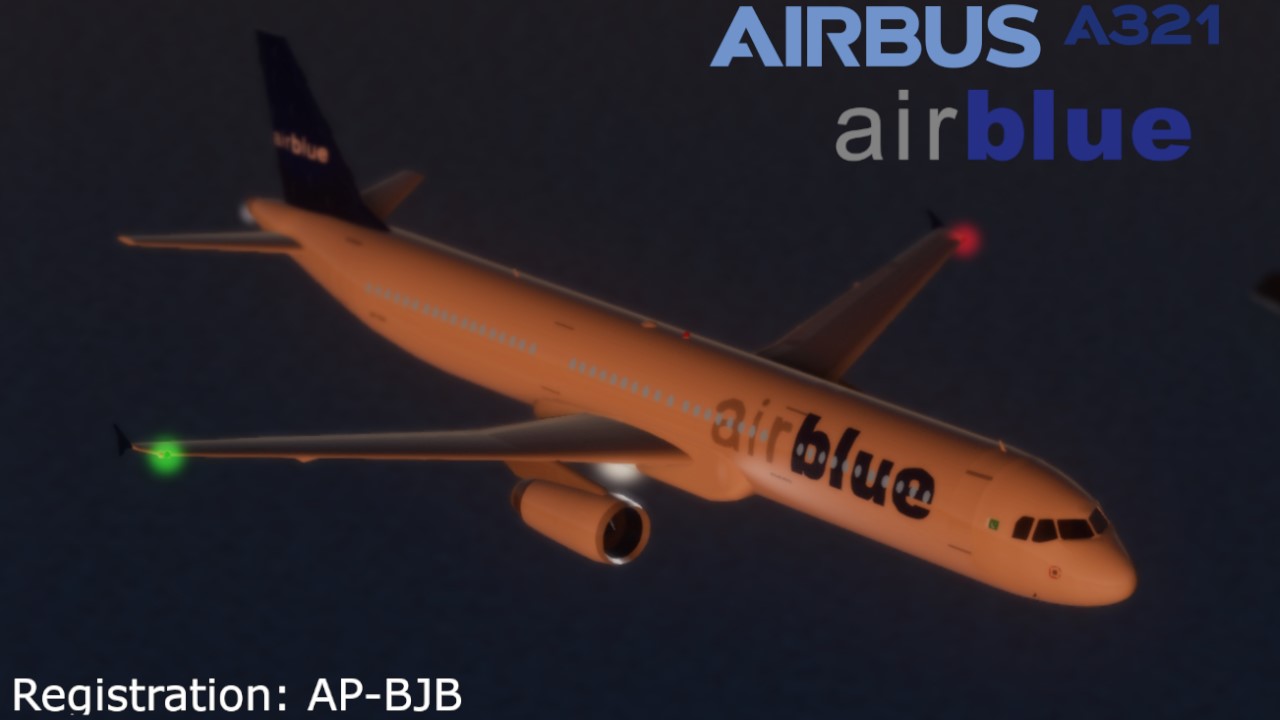
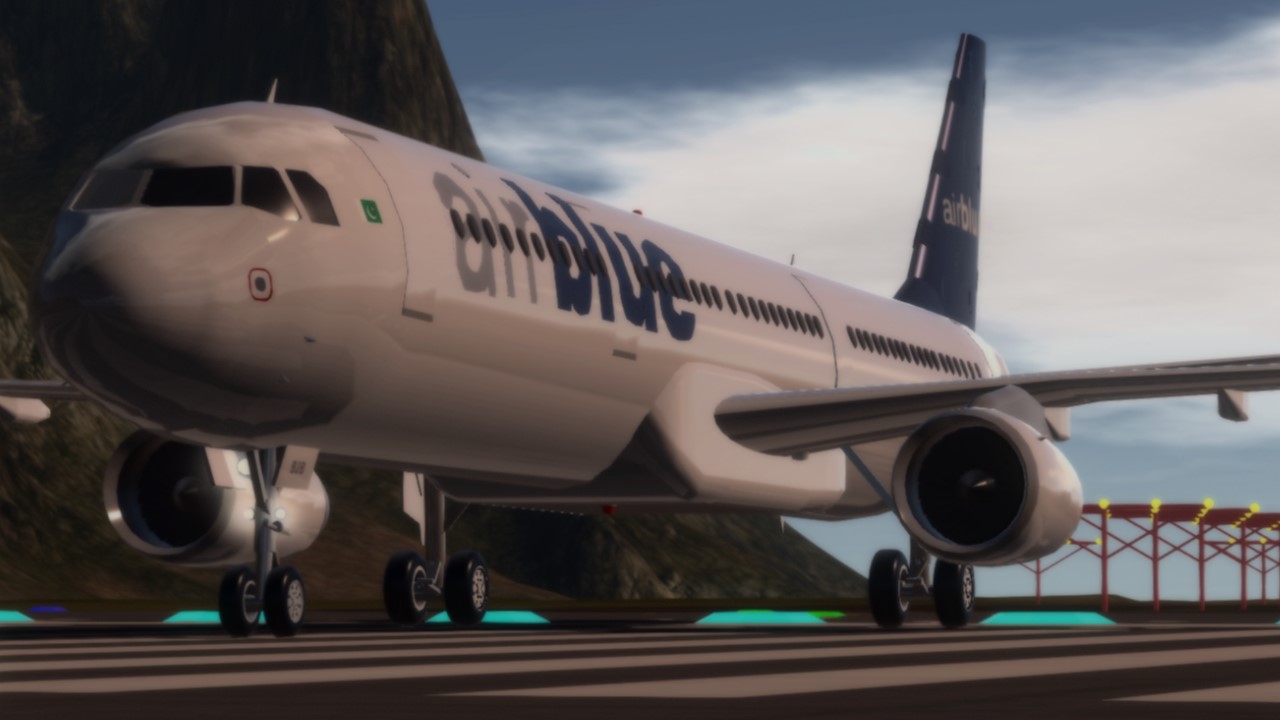
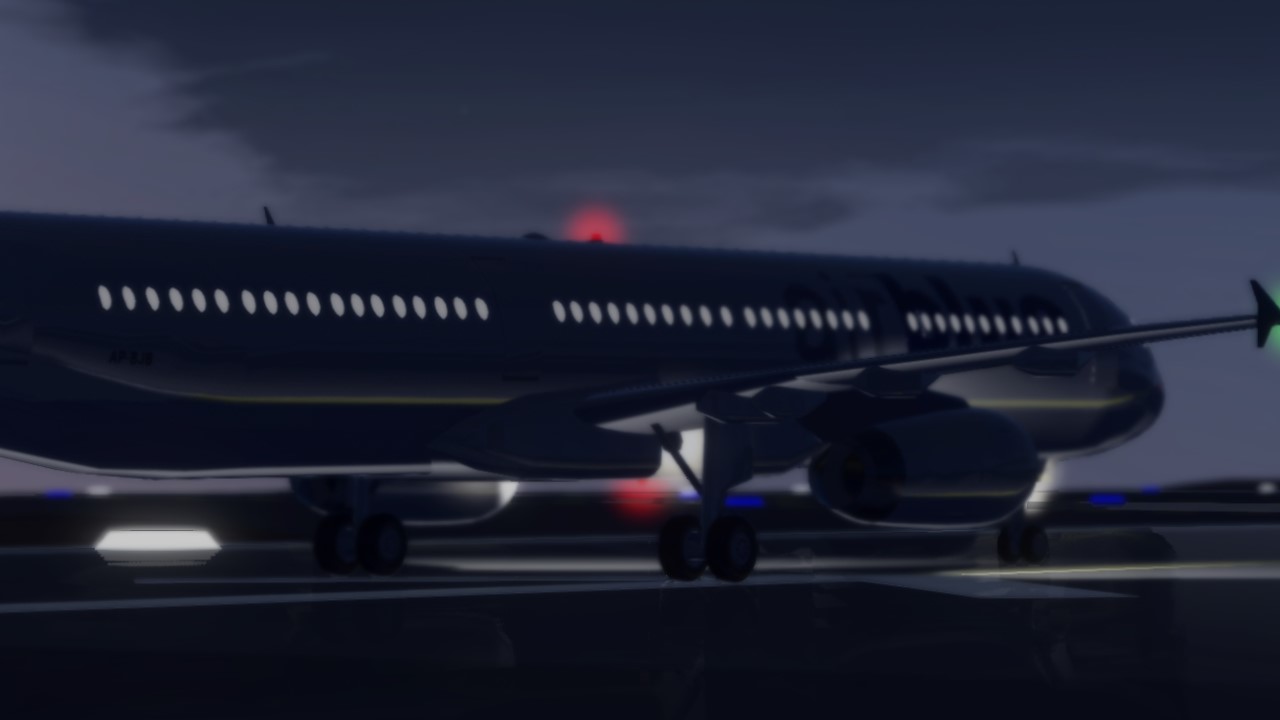
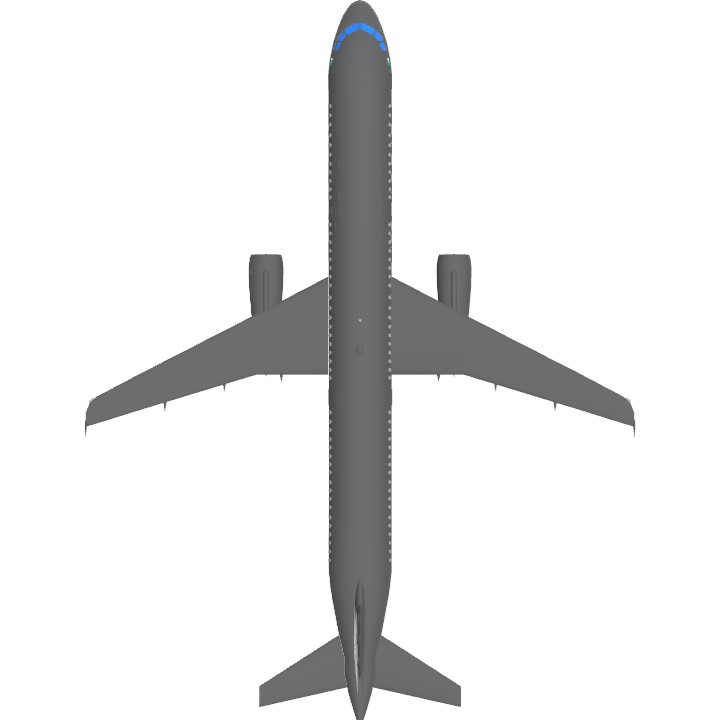
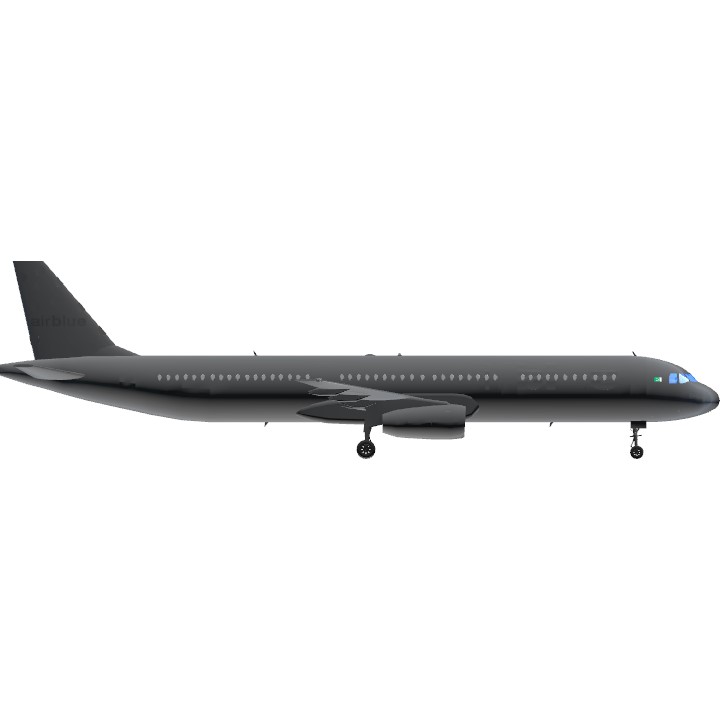
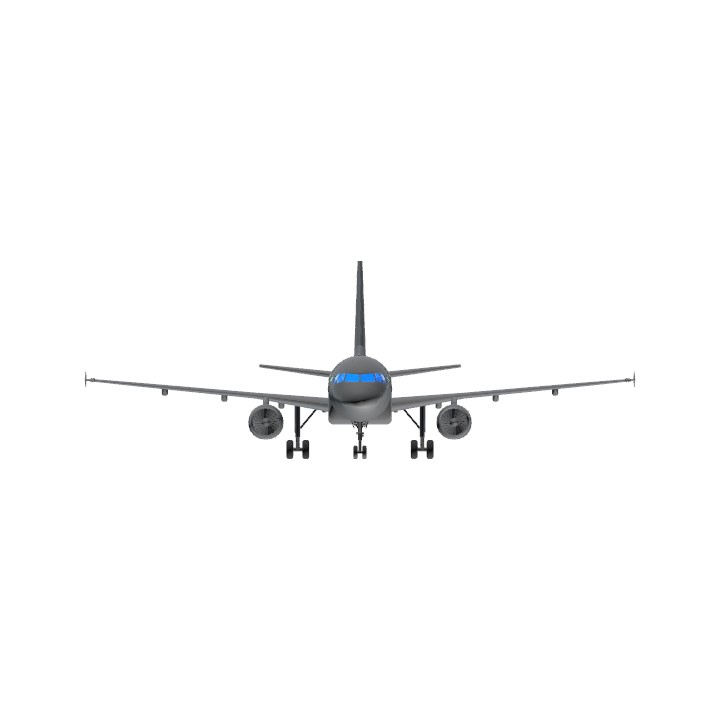
Comments link
569 Part Version
Original Creator Tags
@JP11 @SARACONIKaviationIndustry
Original Creator Tags
@realSavageMan @Seredamia @GalacticaAsia
@DeadlyDialga super air jet lollllll
@DeadlyDialga yeah, when I first heard of that airline I thought that it was an American airline (like the real JetBlue) even their branding and livery looks the same
@LM0418
Tbh, I was going to do a custom (or at least mostly custom cockpit) but then the original build bugged out and I had to restart everything. Then once I got back to where I was, I tried using multi edit to move a cockpit interior from one of @JP11 planes. But then that didn’t work so at the end of my patience I just detached the whole nose section and then reattached the one that’s on now. The A320 family shares the same nose dimensions and cockpit so there wasn’t any hassle in doing so. Hardest part was just getting the subassembly to attach to the right point without being like .10 values off to the right of the x axis
@SheriffHackdogMCPE
Literally my first thought when I heard about this airline. Asia has some… interesting airlines. If you really want some goofy airlines, look at airlines from Indonesia. They’ve got something going on over there.
(No offense to the Indonesian peeps on the site)
@BassemT90
I’ve been looking for a change of pace so I’ll consider it. I may have something else in the works you might like though.
Very nice please can you make a Royal Jordanian airlines livery on any plane ? Thank you
I forgot to say this, but you did the same thing that i did with my A321(Aer Lingus:) Used @Seredamia's A321 body and replaced the nose with the updated version.
Airblue: hey can I copy you homework?
JetBlue: sure, just make it different so it doesn't look like you just copied it
Airblue: sure thing
@Randomplayer
Glad you like it!
@FedexGuy
Thank you
@TheD2O
Welcome back!
@DeadlyDialga hello old friend, I'm back from the dead :)
Nice m8
Requested Tags
@hpgbproductions @MrShenanigansSP
Requested Tags
@JJsimple @HuskyDynamics01 @Dragoranos
Sick!
Requested Tags
@DatRoadTrainGuy19 @xNotDumb @NoblePlanes
Requested Tags
@Randomplayer @Neruneten21 @FedexGuy
Requested Tags
@CL125 @TheFlightGuySP @Inuyasha8215